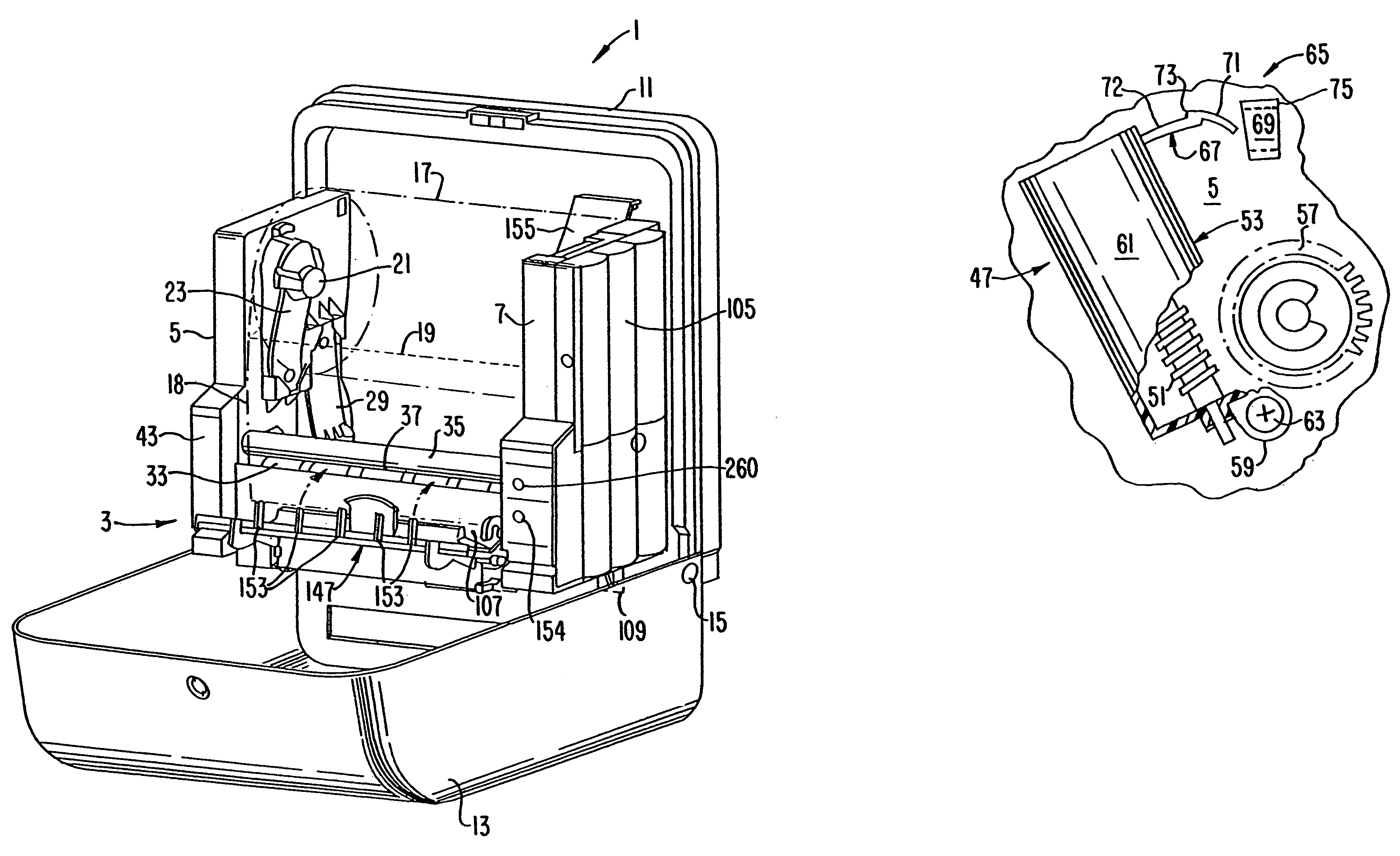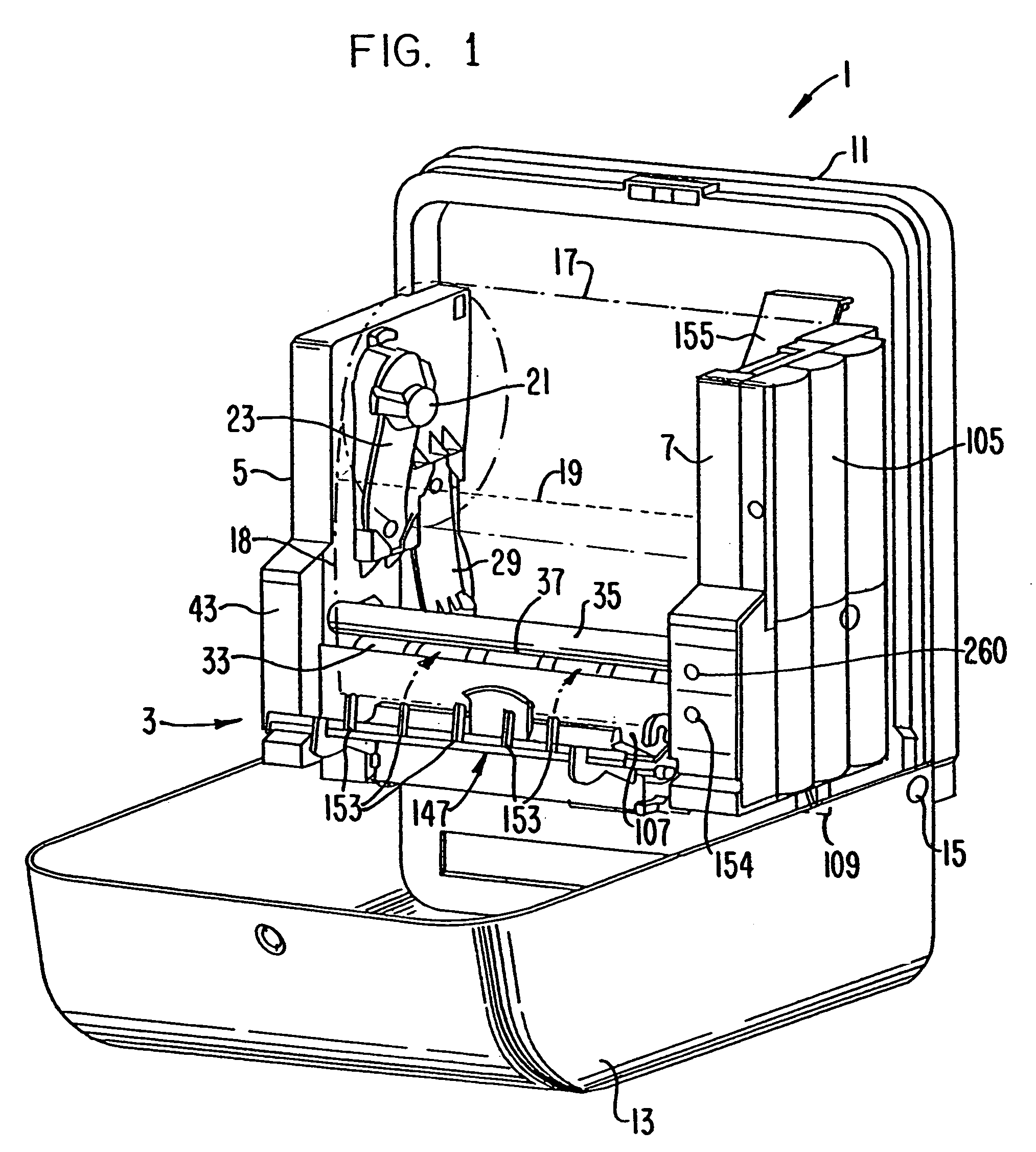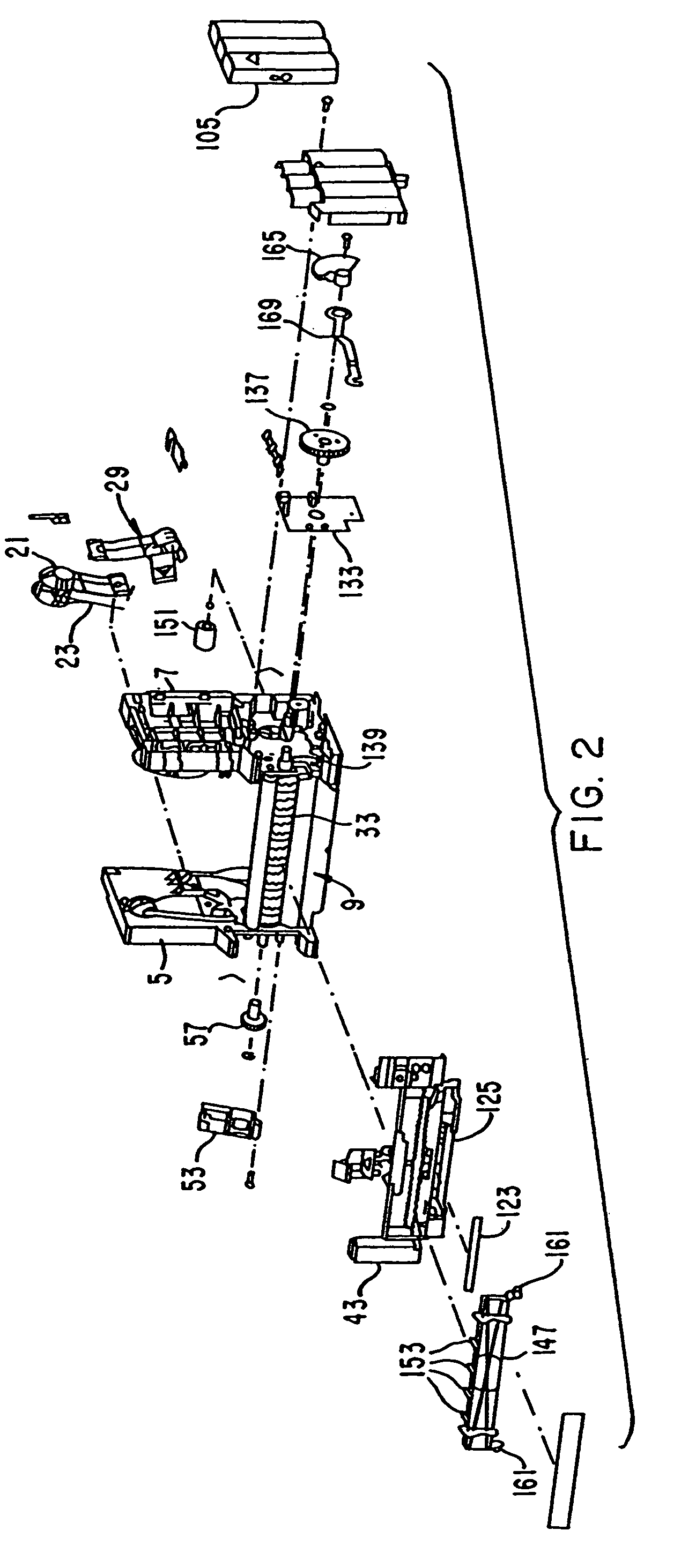Apparatus and methods usable in connection with dispensing flexible sheet material from a roll
a technology of flexible sheet material and apparatus, which is applied in the direction of web handling, transportation and packaging, pulse technique, etc., can solve the problems of significant paper towel waste, unacceptable to many consumers, and soiled toweling exposure, so as to improve the efficiency of institutional/building maintenance operations, reduce the downtime of dispensers, and improve the convenience and simplicity of us
- Summary
- Abstract
- Description
- Claims
- Application Information
AI Technical Summary
Benefits of technology
Problems solved by technology
Method used
Image
Examples
Embodiment Construction
[0061]Referring first to FIGS. 1–3, a paper towel dispenser 1 according to the present invention comprises a chassis assembly 3 that includes a right side chassis member 5, a left side chassis member 7, and a middle chassis member 9 extending between the side chassis members. Dispenser 1 further includes a back panel member 11 and a pivotal front cover 13 attached, by a pin 15, hinge or other convenient attachment mechanism, to back panel member 11. Front cover 13 may be opened and pivoted away from chassis assembly 3 to a web loading position (as shown) allowing a roll 17 of a web material 18 to be loaded into dispenser 1.
[0062]In the illustrated exemplary embodiment, roll 17 comprises a continuous web 18 of flat segments of paper towel material wound upon a hollow cylindrical core. Dispenser 1 could, of course, dispense other flexible webs, paper or otherwise. The web could, e.g., be in the form of folded sheet segments wound onto a roll and separable from each other along lines o...
PUM
| Property | Measurement | Unit |
|---|---|---|
| length | aaaaa | aaaaa |
| stray capacitance | aaaaa | aaaaa |
| stray capacitance | aaaaa | aaaaa |
Abstract
Description
Claims
Application Information
 Login to View More
Login to View More - R&D
- Intellectual Property
- Life Sciences
- Materials
- Tech Scout
- Unparalleled Data Quality
- Higher Quality Content
- 60% Fewer Hallucinations
Browse by: Latest US Patents, China's latest patents, Technical Efficacy Thesaurus, Application Domain, Technology Topic, Popular Technical Reports.
© 2025 PatSnap. All rights reserved.Legal|Privacy policy|Modern Slavery Act Transparency Statement|Sitemap|About US| Contact US: help@patsnap.com



